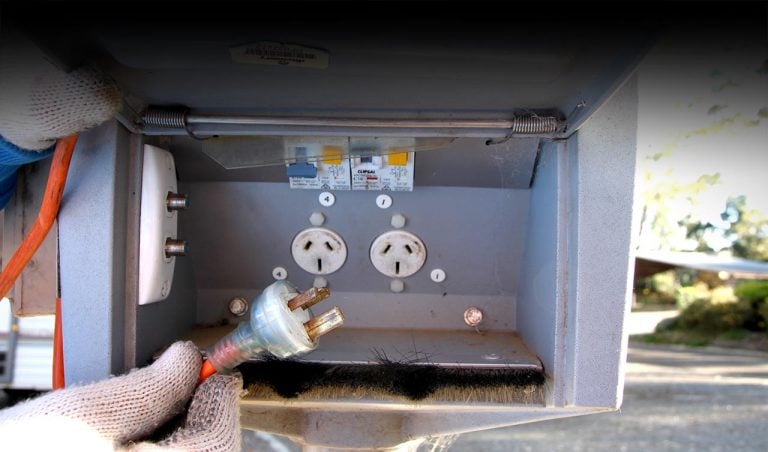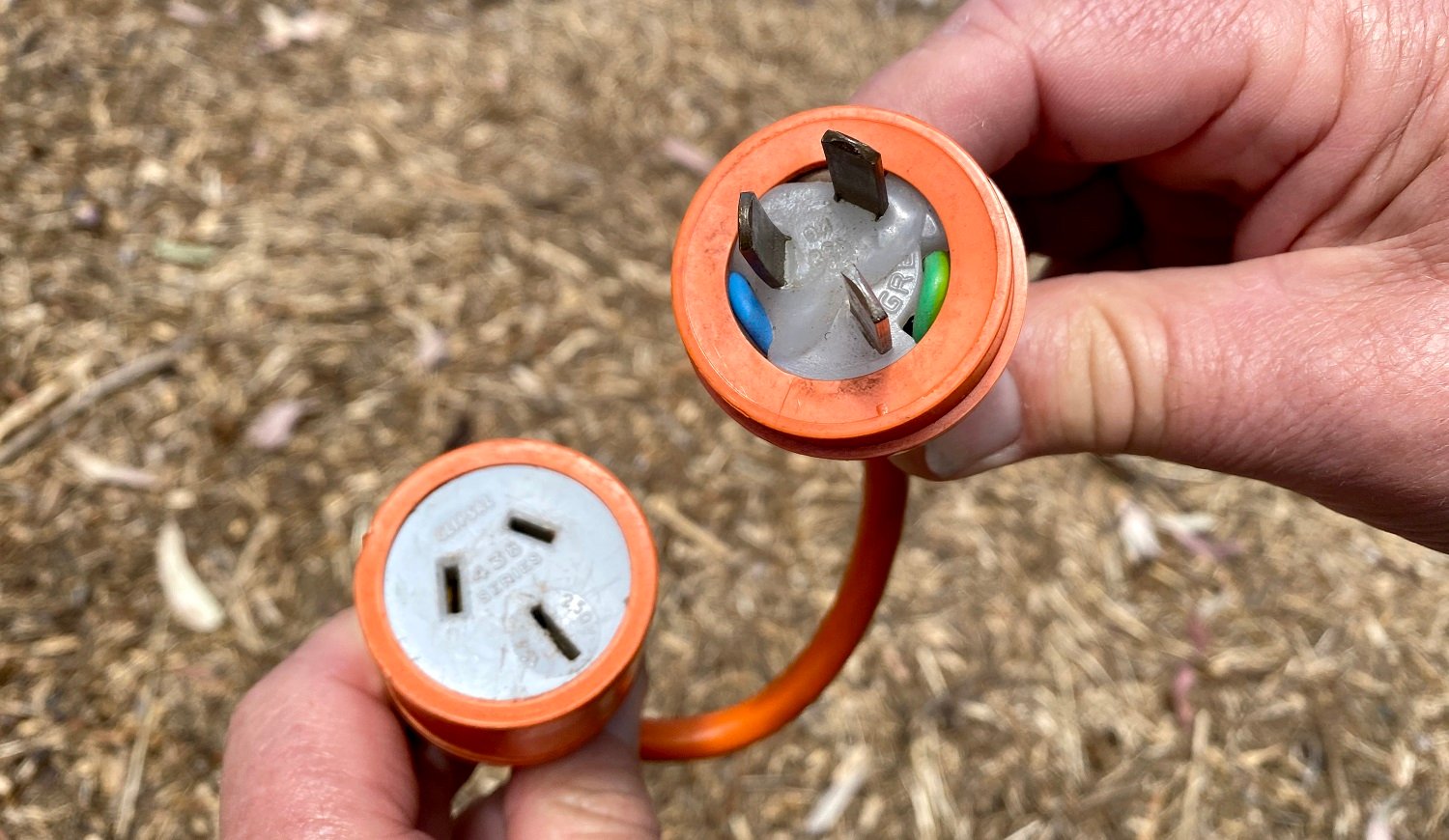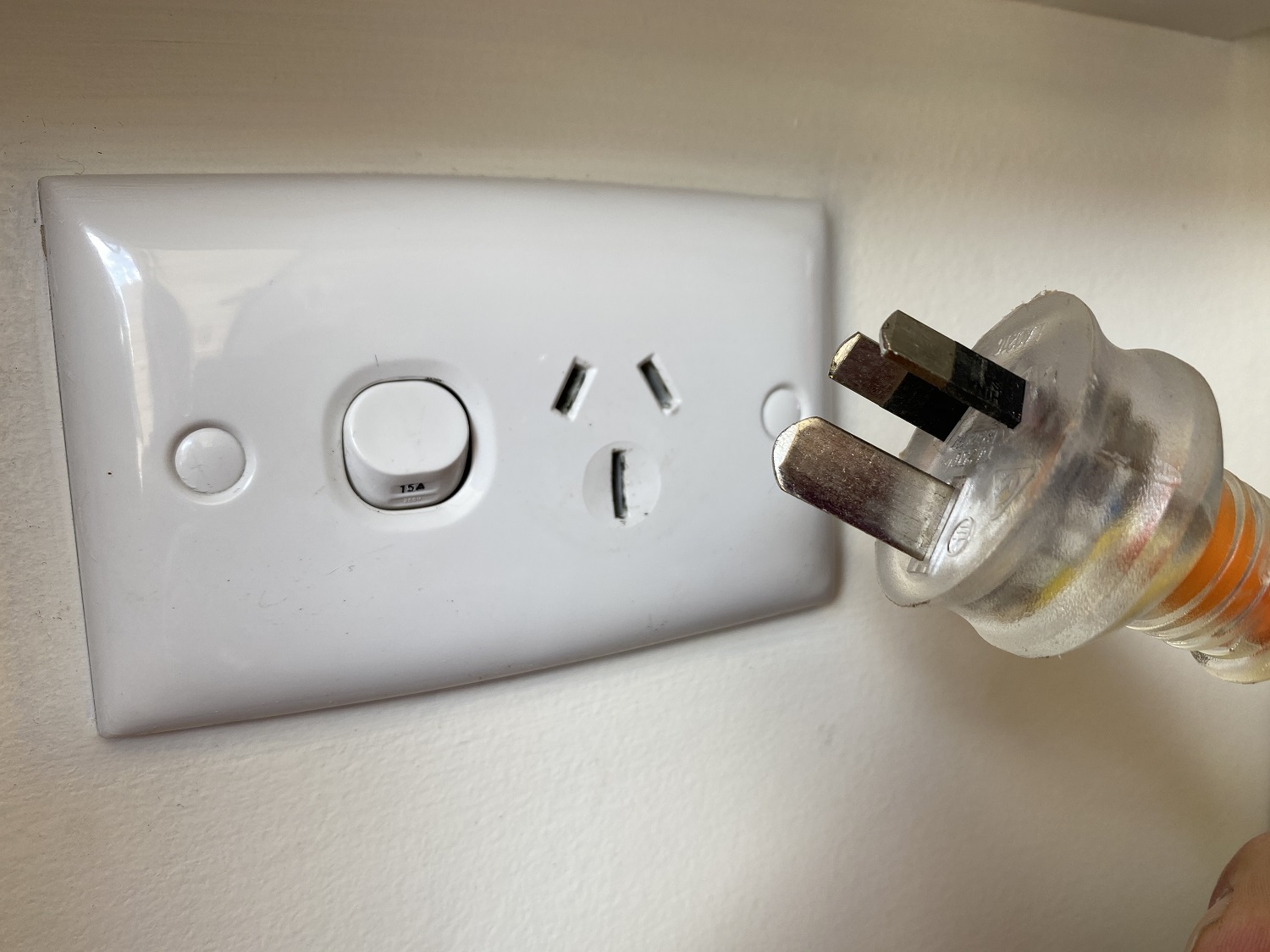Caravan leads: why you shouldn’t muck about with them




Let’s talk about your 15-amp caravan leads and why you shouldn’t muck about with them. Despite it being unsafe, it’s also completely illegal – plain and simple!
Playing with your RV’s 240-volt power isn’t a hobby you dabble with on weekends. Yet some people apparently think it’s fine to tamper with RV connections, leads, plugs and powerpoints. And worse still, they happily tell others that it’s okay to do so. Let us assure you it’s not; you shouldn’t muck about with caravan electricity.

Australia has comprehensive standards for RV electrics that cover double pole wiring, appliances, safety switches, circuit breakers and electrical leads. These standards have been put in place to protect us all. Take things on yourself, and in the unfortunate situation that something goes wrong, you’ll likely find you’ve voided your insurance and are unable to make a claim.
The bottom line is – unless you’ve got the authority to issue electrical compliance certificates, leave your caravan leads alone.

Powerpoints in a normal house are rated at 10 amps and supply 240V power using multiple circuits from a fuse board. This is vastly different from an RV, which uses a single 15-amp connection on both the male and female plugs. And if you’re wondering why they’re different, it was designed this way to stop anyone from wrongly connecting a 15-amp into a 10-amp powerpoint.
Despite what some older caravan owners say (and might have done), it’s not okay to file down the 15-amp earth plug pin on your lead to insert it into a 10-amp powerpoint. It’s illegal and can be dangerous. The majority of earth pins on the market aren’t solid brass but made of thin brass that’s been folded to achieve an earth pin’s dimensions. The brass can weaken when filed and can lose shape and strength, causing an unreliable connection. It’s this earth pin that’s your only device earthing your RV to the ground.
If you’ve got your RV plugged into a 10-amp powerpoint and tried running your air-conditioner, hot water service, three-way fridge, electric hotplates, battery charging inverter, washing machine, and perhaps a toaster plus a kettle, you’re likely to be above 10 amps. This is where things can start to melt if they’re not protected correctly. While you might not notice anything visually, it’s a completely different matter inside the modified plug and lead.

It’s also not okay to make your own caravan leads. If you were to look inside a 10-amp and a 15-amp lead, you’d find the 15-amp lead has thicker copper wire. It needs to be thicker as it carries 1.5 times more current than a standard 10-amp lead. Australian standards apply to leads as well.
First, the leads need to have the same amp-rated plugs and sockets. Secondly, approved leads must have the correct cable size for their length. The next time you find yourself heading to the local hardware store, go and take a look at the leads. You may come across some heavy-duty 10-amp leads that look identical to their big brother. But don’t be fooled into thinking they do the same job. It’s only their outer sheath that’s bigger and not the internal copper wire.
Right or wrong, the caravan parks you stay at have a duty of care (and the right) to inspect your power leads. They also reserve the right to refuse permission for a lead to be plugged into their power supply if it’s deemed unsafe. And there’s also a slow push by some caravan parks for leads to undergo authorised annual test and tag procedures.


The safest way to do this is to use a converter. This accessory accepts a 15-amp plug at one end and a 10-amp plug at the other. But the unit also comes with some current amp breakers that are approved to Australian Standards. It’s been designed to prevent your RV from drawing too many amps by limiting the current amp draw from the 10-amp powerpoint.
The converter comes with an internal breaker switch that disconnects the power supply if it detects a high current amp draw from the 15-amp side. This high current draw will need to be rectified before resetting the switch, or it will continue to trip the unit. You could find it’s something simple tripping it, like the RV has too many high current devices working at once.
These days, there are a few converters on the market, the most well-known and recognised being Ampfibian. Look for features like waterproof ratings and an earth leakage detector (a safety switch), as well as warranty and back-up.
Electricity is dangerous. No matter what the Facebook experts tell you, unless you’re qualified, leave your caravan leads to the real experts!
Well, you won’t want to miss our video series, Are You RV Safe?, where we follow a caravanner, a 4WDer, and a motorhome owner as they put their knowledge to the test.
With the expert guidance of John Eggenhuizen and Michael ‘Borgy’ Borg, these adventurers will face real-life RV safety challenges that test their skills and nerve.
Our editors carefully select the products we feature to ensure they meet the needs of our readers. If you purchase through links on our site, we may earn a small commission. This helps keep our content free and does not cost you anything. Read our full affiliate disclosure.